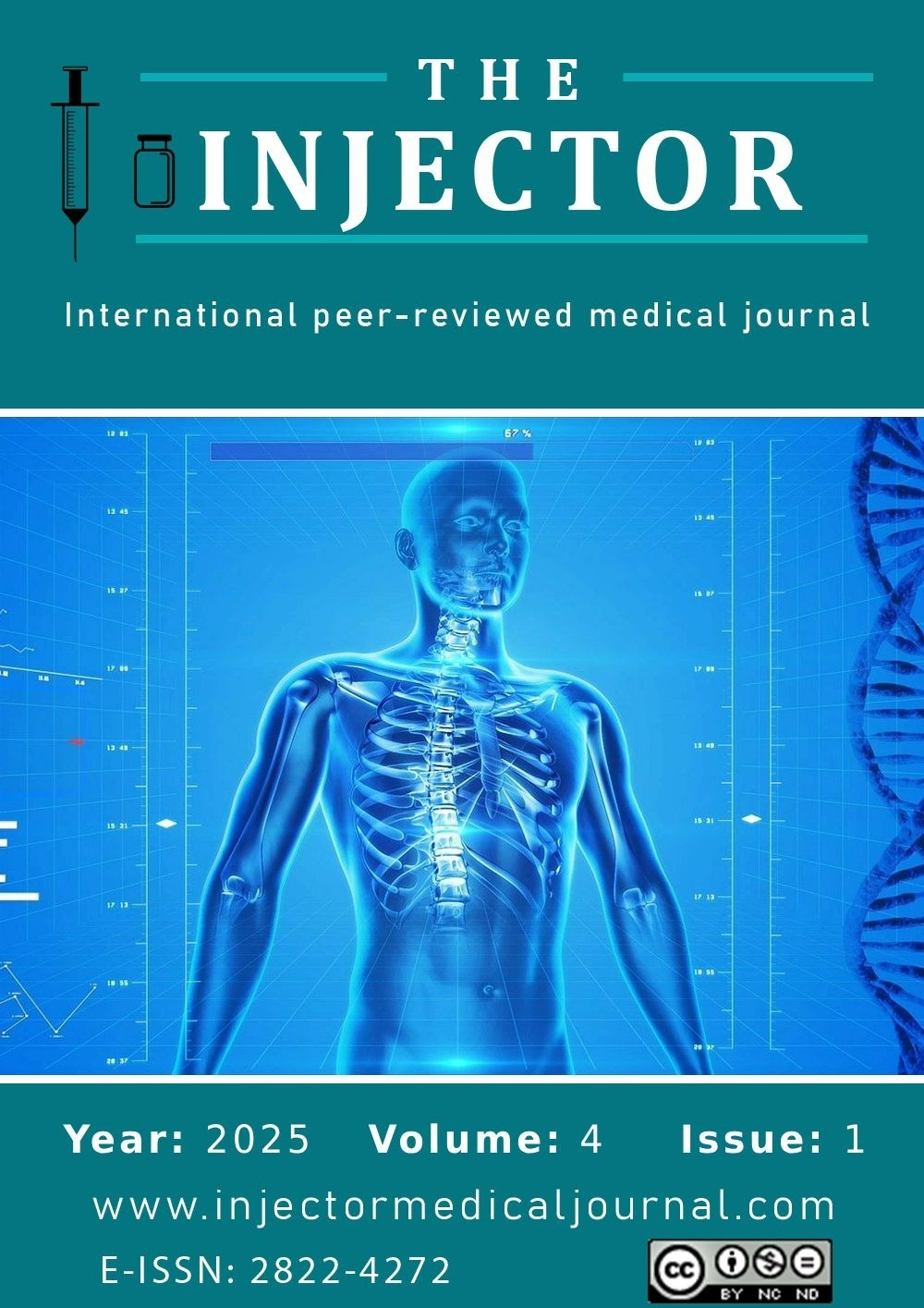Correspondence on ‘Investigation of the chronic pelvic pain developing after bening and malignant caused hysterectomy surgery’
Chronic pelvic pain and hysterectomy
DOI:
https://doi.org/10.5281/zenodo.16729866Keywords:
Chronic pelvic pain, hysterectomy, postoperative pain, oncologyAbstract
Dear Editor,
I read with great interest the article by Özdemir et al., titled “Investigation of the Chronic Pelvic Pain Developing After Benign and Malignant Caused Hysterectomy Surgery” published in The Injector (2024; 3(3):92–97) (1). The study provides valuable insights into the persistence of chronic pelvic pain (CPP) following hysterectomy due to both benign and malignant indications. The observation that pain scores at the third and ninth postoperative months were not significantly different in relation to surgical indication is noteworthy. However, pain scores tended to increase over time in all groups, with a particular increase in the ninth month.
In the subgroup analysis, it was interesting to note that patients aged 45 years and above had higher pain scores at three months compared to younger patients, although this difference disappeared by the ninth month. Additionally, the presence or absence of comorbidities did not significantly influence pain scores over time.
Despite the strengths of the study, there are several variables that might further enrich the discussion if considered. Firstly, the study does not report on uterine fibroid characteristics such as size and location, nor does it incorporate the PALM-COEIN classification for abnormal uterine bleeding (2), which could influence postoperative pain outcomes. Furthermore, tumor size, location, and type in malignancy-related hysterectomies were not detailed, nor were the anesthesia methods or specific pharmacologic agents used—despite evidence suggesting spinal anesthesia may reduce the incidence of CPP (3).
Additionally, numerous patient-related factors have been associated with postoperative pain outcomes, such as age, body mass index, parity, menopausal status, concurrent surgeries, surgical complications, educational and employment status, and previous surgical history (3–5). The presence of severe preoperative pelvic pain and intense acute postoperative pain have been previously linked to higher risks of developing CPP (4,6).
Psychosocial and behavioral factors, including smoking (a well-documented risk factor for chronic pain) (6) and younger age (7), also merit attention. Moreover, psychiatric comorbidities, particularly depression, are known contributors to pain chronification (8). While the present study utilized the Beck Depression Inventory, the lack of significant differences between subgroups should be interpreted with caution. Prior prospective work has demonstrated depression to be a key risk factor for the development of chronic postoperative pain after hysterectomy (4).
Given these considerations, it would be beneficial for future studies to evaluate smoking status, preoperative and early postoperative pain levels, as well as depression scores. In addition, validated preoperative questionnaires may help identify high-risk patients and guide personalized perioperative interventions aimed at minimizing chronic pain development (4).
Furthermore, recent literature suggests that management strategies for CPP should shift from disease-based to phenotype-based approaches, particularly by distinguishing neurogenic from non-neurogenic pain. The pain desensitization algorithm proposed by Rogério et al. offers a practical tool to help guide treatment decisions and reduce CPP severity prior to considering repeat surgical intervention (9). Nonetheless, interprofessional management strategies for CPP remain insufficiently studied, and the role of psychosocial interventions still requires further clarification (10).
In conclusion, while the work by Özdemir et al. makes an important contribution to the literature, the inclusion of broader perioperative, psychosocial, and patient-centered variables in future studies would provide a more comprehensive understanding of CPP following hysterectomy.
References
Özdemir BG, Mazloomyar HŞ, Bilgi A, Uçar MG, Çelik Ç. Investigation of the chronic pelvic pain developing after bening and malignant caused hysterectomy surgery: Post-hysterectomy chronic pelvic pain. The Injector. 2024;3(3):92–7.
Munro MG, Critchley HO, Broder MS, Fraser IS; FIGO Working Group on Menstrual Disorders. FIGO classification system (PALM-COEIN) for causes of abnormal uterine bleeding in nongravid women of reproductive age. Int J Gynaecol Obstet. 2011;113(1):3–13.
Brandsborg B, Nikolajsen L, Hansen CT, Kehlet H, Jensen TS. Risk factors for chronic pain after hysterectomy: a nationwide questionnaire and database study. Anesthesiology. 2007;106(5):1003–12.
Benlolo S, Hanlon JG, Shirreff L, Lefebvre G, Husslein H, Shore EM. Predictors of persistent postsurgical pain after hysterectomy – a prospective cohort study. J Minim Invasive Gynecol. 2021;28(12):2036–46.e1.
Han C, Ge Z, Jiang W, Zhao H, Ma T. Incidence and risk factors of chronic pain following hysterectomy among Southern Jiangsu Chinese Women. BMC Anesthesiol. 2017;17(1):103.
Sørensen J, Kjeldsen J, Kugathasan P, Lunde S, Andersen E, Skov MN, et al. The risk of developing postoperative chronic pain after abdominal and robot-assisted laparoscopic hysterectomy: a cross-sectional study. J Gynecol Surg. 2015;31(4):198–204.
Montes A, Roca G, Sabaté S, Lao JI, Navarro A, Cantillo J, et al. Genetic and clinical factors associated with chronic postsurgical pain after hernia repair, hysterectomy, and thoracotomy: a two-year multicenter cohort study. Anesthesiology. 2015;122(5):1123–41.
Edwards RR, Dworkin RH, Sullivan MD, Turk DC, Wasan AD. The role of psychosocial processes in the development and maintenance of chronic pain. J Pain. 2016;17(9 Suppl):T70–T92.
Rogério LSR, Chung MK, Butrick CW, Antolak SJ Jr, Bevilaqua DR, Kureishy S, et al. A pain desensitization algorithm for phenotyping and treating chronic pelvic pain. JSLS. 2024;28(2):e2024.00009.
Klotz SGR, Kolbe C, Rueß M, Brünahl CA. The role of psychosocial factors in the interprofessional management of women with chronic pelvic pain: a systematic review. Acta Obstet Gynecol Scand. 2024;103(2):199–209.
Downloads
Published
How to Cite
Issue
Section
License
Copyright (c) 2025 The Injector

This work is licensed under a Creative Commons Attribution-NonCommercial 4.0 International License.







